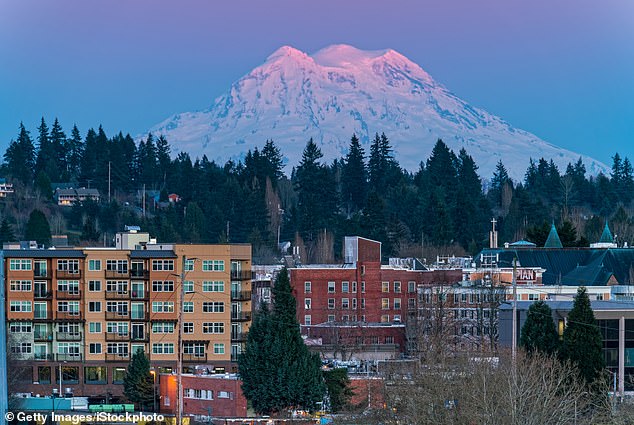
Catastrophic Volcano Rattled by Hundreds of Quakes as Eruption Fears Mount
Mount Rainier Earthquake Swarm Sparks Eruption Concerns
[Image: Mount Rainier looming over Olympia, Washington, with caption: "Mount Rainier, an active volcano, overlooks cities like Olympia, home to over 50,000 residents."]
Hundreds of small earthquakes shook Mount Rainier in Washington this week, raising fears that the volatile volcano—one of the most dangerous in the U.S.—could awaken. The U.S. Geological Survey (USGS) reported the seismic swarm began July 8, with tremors below magnitude 1.7 occurring at shallow depths of 1.2–3.7 miles beneath the summit. While officials confirmed no immediate eruption risk, this marks the largest quake cluster since 2009.
Despite rising activity, the volcano’s alert level remains “normal.” Instruments detected no ground deformation or other anomalies, according to the USGS Cascades Volcano Observatory. Still, Mount Rainier’s threat stems from its potential for catastrophic lahars—fast-moving mudflows of melted snow, rock, and debris. Over 90,000 people in Seattle, Tacoma, and Portland live within reach of such hazards.
Why Lahars Are a Deadly Threat
[Image: Child in muddy water after the 1985 Nevado del Ruiz lahar in Colombia, with caption: "The 1985 Nevado del Ruiz eruption triggered lahars that killed 25,000 people in Colombia."]
Lahars can obliterate communities in minutes, crushing structures and burying landscapes. Tacoma and South Seattle sit atop ancient mudflows from Rainier’s past eruptions. “It’s not lava that keeps me up—it’s the lahars,” said volcanologist Jess Phoenix. These flows can be triggered by eruptions, heavy rainfall, or even gradual slope weakening, as seen in Colombia’s 1985 Armero tragedy and the 1980 Mount St. Helens eruption, which claimed 57 lives.
Preparing for Disaster
[Image: 1980 Mount St. Helens lahar damage, with caption: "Mount St. Helens’ 1980 eruption caused lahars that destroyed 200+ homes and critical infrastructure."]
Since 1998, the Mount Rainier Lahar Detection System—a network of seismometers and sensors—has monitored the volcano. Upgrades now provide real-time alerts, giving communities like Orting, Washington, critical evacuation time. In March 2024, over 45,000 students participated in the world’s largest lahar drill. While an eruption isn’t imminent, experts stress preparedness: “It’s not if, but when,” Phoenix warns.
As seismic activity continues, scientists and residents remain vigilant against the looming threat of Rainier’s awakening.
[Image: Satellite view of Mount Rainier, highlighting lahar pathways, with caption: "Lahar zones (red) show potential mudflow routes from Mount Rainier."]
Word count: 598


